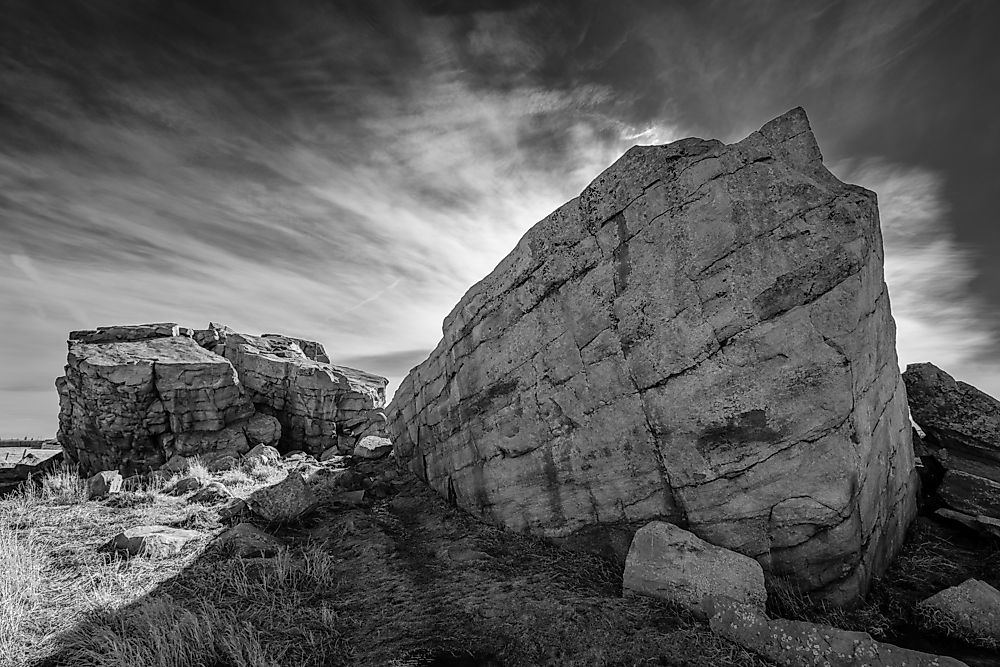What and Where Is Okotok?

Big Rock, commonly known as Okotok by the Black foot, is a huge boulder in Canadian Prairie located on a relatively flat and bare surface. The boulder is part of a 580-mile long Foothill Erratic Train of thousands of distinct quartzite which extends along the eastern portion of the Rocky Mountains. The angular bolder is split into two parts measuring 135 by 60 feet and 30 feet high and consists of thick-bedded quartzite. The Okotok is found approximately 5 miles west of Okotoks Town in Alberta. The boulder weighs approximately 16,500 tons and can be seen even at a distance within the prairie. It might have been used as a landmark by the local indigenous people of Alberta.
Geology of the Big Rock
As the Pleistocene Period was coming to an end, approximately 12,000-17,000 years ago, the upper parts of the Athabasca River valley was hit by a massive landslide, leading to millions of tons of quartzite and related contents sliding from the mountain to the top of the valley glacier. A large amount of Gog Group quartzite was carried eastwards by a valley glacier. Because the quartzite was carried atop a glacier, it did not break into pieces by the transporting glacier. When the transporting ice sheet melted away, the quartzite and its related contents formed the Foothill Erratics Train which is a long line of rocks. Big Rock or Okotok is one of the deposited quartzite rocks which originated from the Athabasca River Valley and transported to the current location.
History
The Big Rock was first used by the Blackfoot as an important landmark to locate the Sheep River. The rock was mainly popular among the indigenous people before the Europeans settled in the area. The name of the town (Okotoks) was coined from the Blackfoot word “O’kotok” which means “rock.” The Bick Rock contains ancient photographs and was regarded as a medicinal rock by the locals. It was declared a Provincial Historic Site by the Government in the 1970s to preserve its cultural and geological significance.











